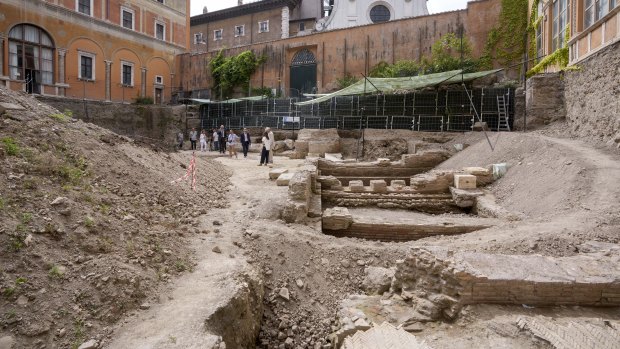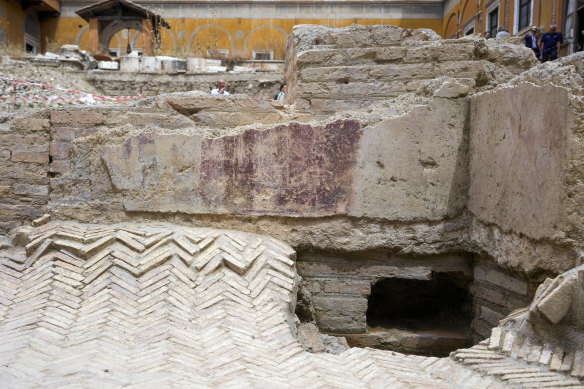
Rome: Rome’s next luxury hotel has some very good bones: archaeologists say the ruins of Nero’s Theatre, an imperial theatre referred to in ancient Roman texts but never found, have been discovered under the garden of a future Four Seasons Hotel steps from the Vatican.
They have excavated deep under the walled garden of the Palazzo della Rovere since 2020 as part of planned renovations on the frescoed Renaissance building.

The excavation site of the ancient Roman emperor Nero’s theatre, 1st century AD, backdropped by the church of Santo Spirito in Sassia, in Rome.Credit: AP
The palazzo, which takes up a city block along the broad Via della Conciliazione leading to St Peter’s Square, is home to an ancient Vatican chivalric order that leases the space to a hotel to raise money for Christians in the Holy Land.
Archaeologists found marble columns and gold-leaf decorated plaster, leading them to conclude that the Nero’s Theatre referred to in texts by Pliny the Elder, an ancient Roman author and philosopher, as well as by Suetonius and Tacitus, was indeed there, located at the site just off the Tiber River.
Researchers believe remnants from the decorations resembled those of Nero’s own residence, and its layout, perhaps accommodating an audience of thousands, appears consistent with the private theatre Tacitus described as the place from where the emperor saw Rome burn in July AD64.
Whether he actually played an ancient instrument, described first as a lute and much later, in the 1600s, as a fiddle is a question not answered by the findings.

A fresco is seen on a wall after excavation at Nero’s Theatre. The site is due to be reburied when research is completed.Credit: AP
However, researchers also found 10th-century glass coloured goblets and pottery pieces that are unusual because so little is known about this period in Rome.
Officials hailed the findings from the excavation as “exceptional”, given they provide a rare look at a stratum of Roman history from the Roman Empire through to the 15th century.









 Add Category
Add Category